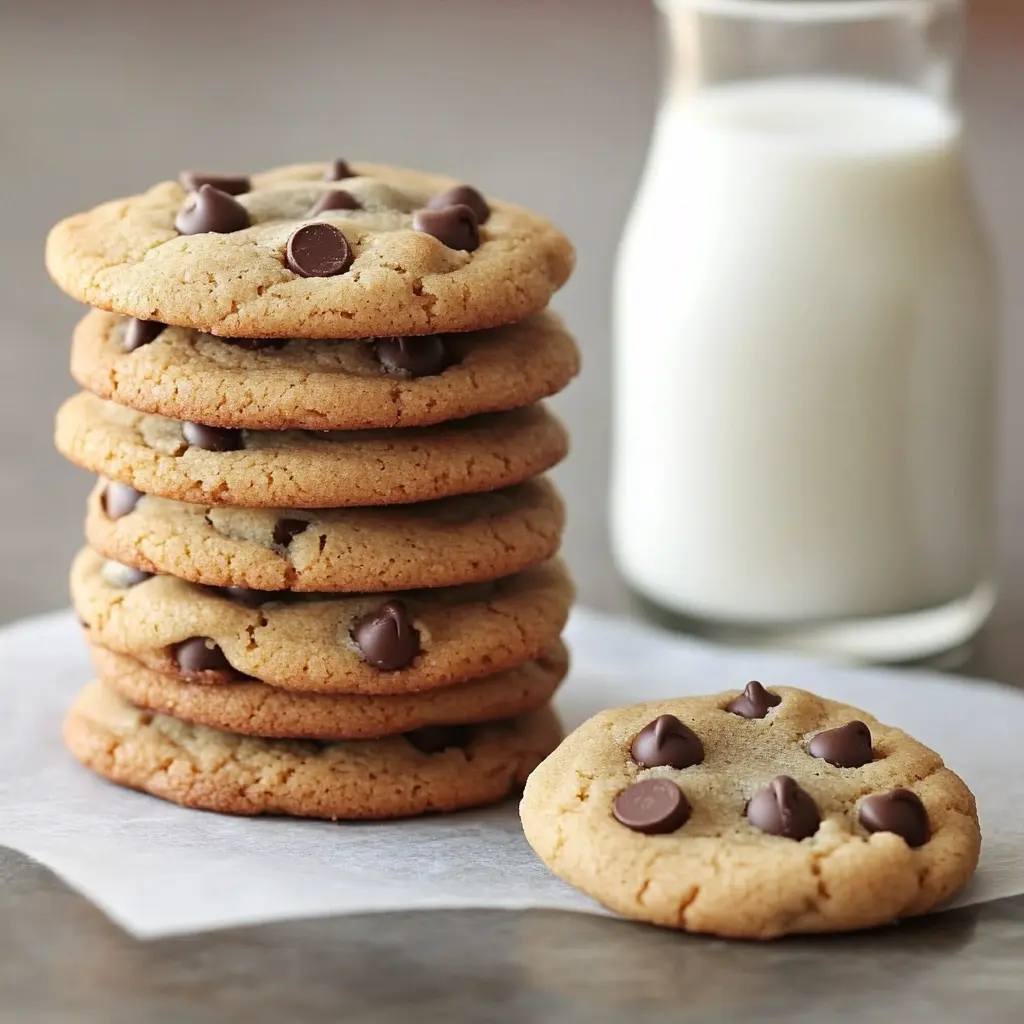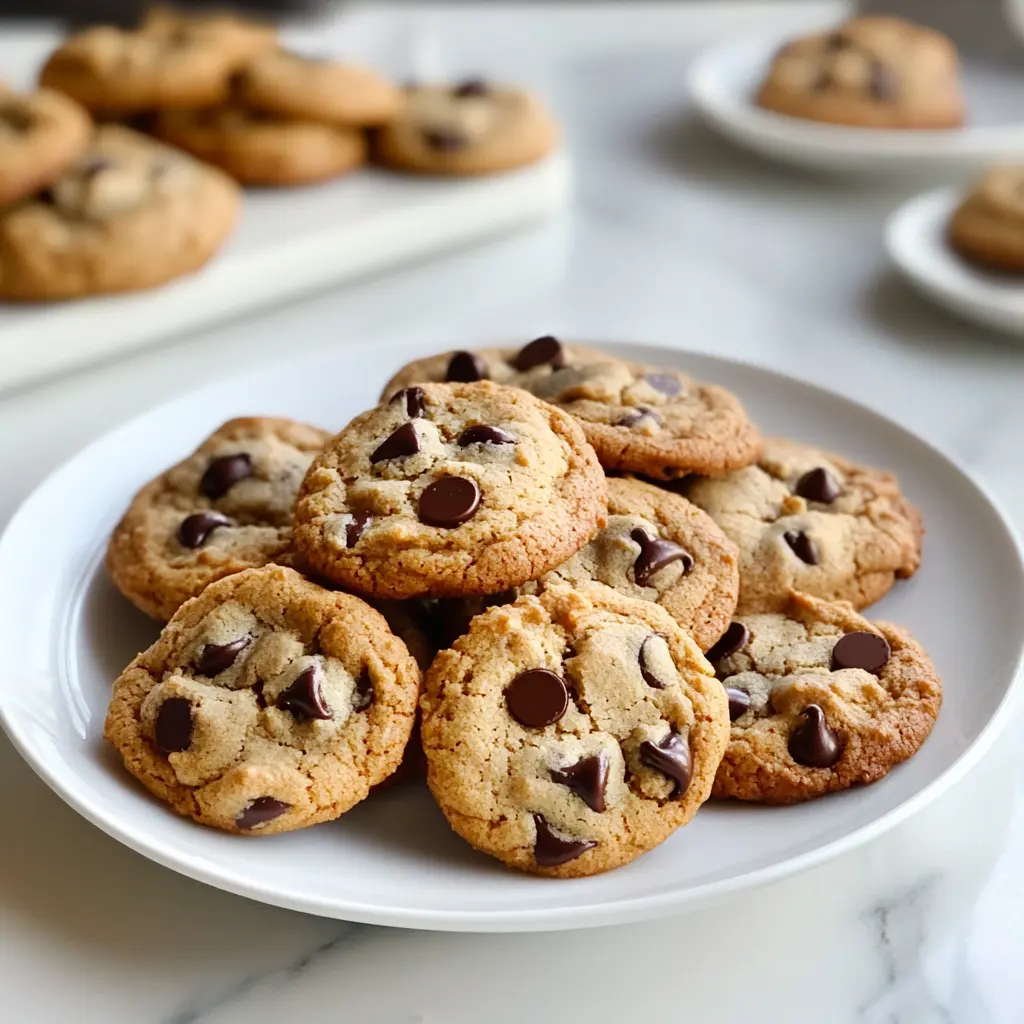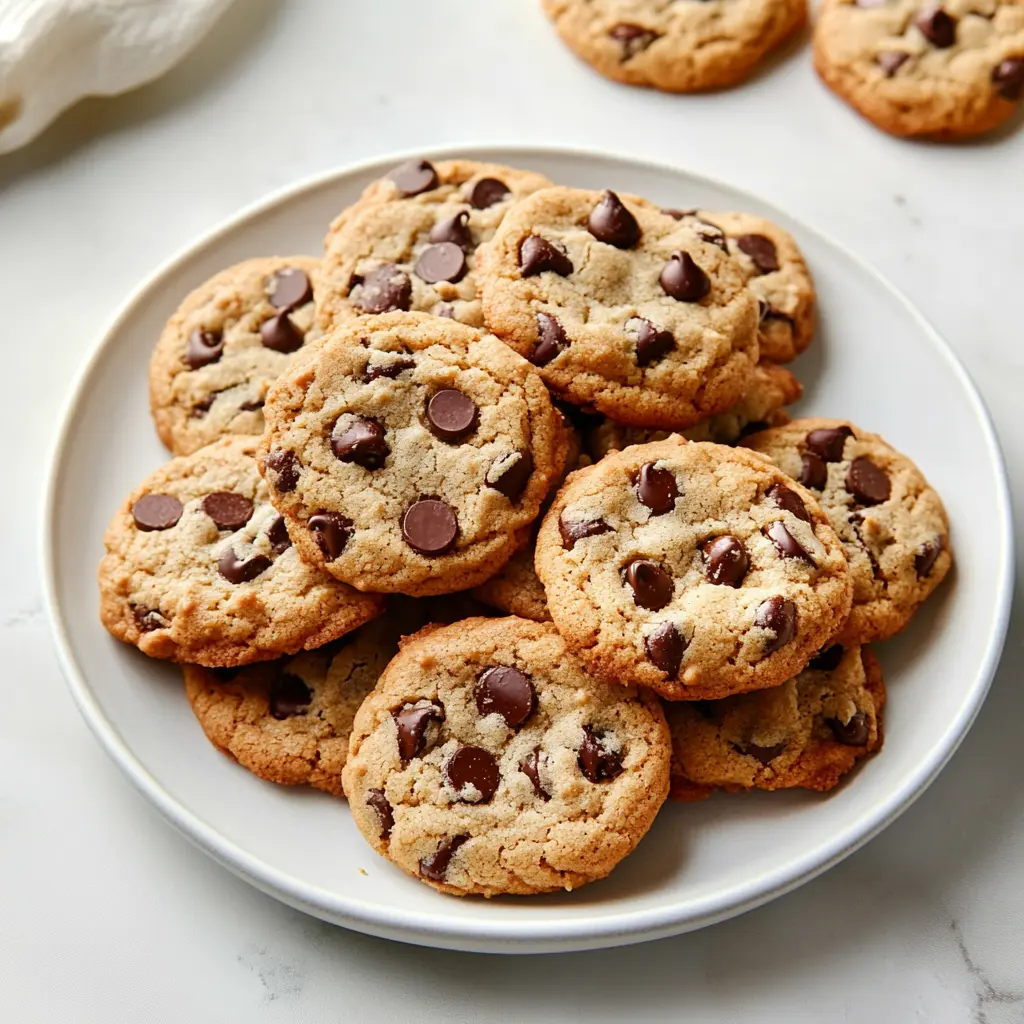Is It OK to Not Use Brown Sugar in Cookies? Alternatives Explained
Cookies are a beloved treat enjoyed by many, and brown sugar is a staple ingredient in countless cookie recipes. However, what happens when you decide to skip brown sugar in cookies? Is it possible to create delicious cookies without it, and what are the best alternatives? This article dives into the role of brown sugar in cookies, explores viable substitutes, and examines the impact of these alternatives on the final product. We’ll also touch on health and nutritional considerations, ensuring you have all the information needed to bake delightful cookies, even without brown sugar.
Part 1: Understanding the Role of Brown Sugar in Cookies
Introduction
Brown sugar is integral to traditional cookie recipes, offering a unique flavor and contributing to the texture and moisture of the cookies. Its deep, caramel-like taste and the chewiness it imparts make it a favorite among bakers. Yet, there are several reasons one might want to skip brown sugar in cookies, ranging from dietary restrictions to simple pantry shortages.
The question arises: Is it OK to not use brown sugar in cookies? Fortunately, there are numerous substitutes that can be used without compromising too much on the cookie’s quality. In this part, we’ll delve into why brown sugar is so essential in cookies and explore the common reasons for considering alternatives.
Why Brown Sugar is Used in Cookies
Brown sugar plays a crucial role in cookie baking due to its unique properties. It’s not just about the sweetness; brown sugar impacts both the flavor and texture of cookies in significant ways.
Flavor and Texture
Brown sugar provides a rich, molasses-like flavor that white sugar can’t replicate. This depth of flavor enhances the overall taste of cookies, making them more complex and satisfying. Additionally, the presence of molasses in brown sugar adds a bit of moisture, which helps keep cookies soft and chewy.
Moisture Retention and Chewiness
One of the primary reasons bakers use brown sugar in cookies is for its moisture-retaining qualities. The higher moisture content in brown sugar compared to white sugar helps produce cookies that are chewy rather than crispy. This moisture also affects how the cookies spread during baking, usually resulting in a thicker, denser texture.
Ingredients and Calories Information Table
| Ingredient | Quantity | Calories |
|---|---|---|
| Brown Sugar | 1 cup | 829 |
| White Sugar | 1 cup | 774 |
| Coconut Sugar | 1 cup | 768 |
| Honey | 1 cup | 1031 |
| Maple Syrup | 1 cup | 819 |
Brown sugar’s role is undeniably significant, but there are times when you might want or need to find a substitute. Whether you’re out of brown sugar or seeking a healthier alternative, it’s helpful to know what options are available and how they can be used effectively in cookie recipes.
Exploring substitutes for brown sugar can be as delightful as discovering new pairings for comfort foods. For more inspiration on enhancing your meals, check out what to serve with mac and cheese.
Viable Substitutes for Brown Sugar
Using White Sugar
Differences in Flavor and Texture
When you skip brown sugar in cookies and opt for white sugar, you’ll notice distinct differences. White sugar lacks the molasses content found in brown sugar, resulting in a lighter flavor profile. This can make your cookies taste sweeter but with less depth. Additionally, white sugar doesn’t retain moisture as effectively, often leading to cookies that are crispier and less chewy than their brown sugar counterparts.
Adjustments Needed in Recipes
To compensate for the moisture loss, you might consider adding a small amount of molasses or honey to your recipe. Alternatively, reducing the baking time slightly can help retain some softness in the cookies. However, these adjustments are minimal, and white sugar remains a convenient and readily available substitute.
For a comprehensive guide on maintaining nutritional balance in your recipes, explore Kraft Mac and Cheese Nutrition.
Coconut Sugar
Benefits and How to Use It
Coconut sugar is a popular alternative to brown sugar due to its lower glycemic index and slightly caramel-like flavor. It’s made from the sap of coconut palm trees and can be used in a 1:1 ratio as a substitute for brown sugar. This means you can swap it directly into your recipes without complex conversions.
Impact on Cookie Texture
Using coconut sugar in place of brown sugar can produce cookies that are very similar in texture. They tend to be slightly softer and can maintain a good level of chewiness. The subtle hint of coconut flavor adds a unique twist that complements various cookie recipes.
For more insights into interesting ingredients, you can check out What is Panera Mac and Cheese Made Of?.
Honey
Sweetness and Moisture Content
Honey is another excellent substitute for brown sugar, particularly because of its high moisture content and natural sweetness. It’s sweeter than sugar, so you’ll need less of it – generally, use 3/4 cup of honey for every cup of brown sugar. Honey also adds a distinct floral note to cookies, which can enhance the overall flavor.
Adjustments in Baking Process
When using honey, reduce the liquid in your recipe slightly to account for its higher moisture content. You should also lower the baking temperature by about 25°F to prevent over-browning. The result will be cookies that are moist and chewy, with a unique taste profile.
For a delicious twist on traditional recipes, explore the French Toast Bagel Recipe.
Maple Syrup
Flavor Profile and Usage Tips
Maple syrup offers a rich, nuanced sweetness that’s perfect for cookies. To substitute maple syrup for brown sugar, use 3/4 cup of syrup for every cup of sugar and reduce other liquids in the recipe by about 3 tablespoons. This will ensure your dough isn’t too runny.
Changes in Baking Time and Temperature
Because maple syrup is a liquid, you’ll need to watch your cookies closely to avoid over-spreading. Slightly lower the oven temperature to ensure even baking and adjust the baking time as necessary. The resulting cookies will be soft and flavorful, with a pleasant maple undertone.
For a hearty, comforting recipe to pair with your baked treats, check out the Hamburger Mac and Cheese Recipe.
Impact of Substitutes on Cookies
Texture and Consistency Changes
How Different Substitutes Affect the Chewiness and Crispiness
When you skip brown sugar in cookies and use substitutes like white sugar, coconut sugar, honey, or maple syrup, the texture and consistency of your cookies will inevitably change. Brown sugar’s molasses content contributes to a denser, chewier texture. White sugar, in contrast, results in a crisper cookie due to its lower moisture content. Cookies made with coconut sugar tend to be soft and slightly chewy, with a texture similar to those made with brown sugar. Honey and maple syrup, being liquid sweeteners, produce cookies that are moist and tender but may spread more during baking, leading to thinner cookies.
Managing Moisture Levels and Spreading
To manage the moisture levels and prevent excessive spreading when using liquid sweeteners like honey or maple syrup, it’s crucial to adjust the recipe. Reducing the amount of other liquids or slightly increasing the flour content can help achieve the desired consistency. Additionally, chilling the dough before baking can minimize spreading, resulting in thicker cookies. Using parchment paper or silicone baking mats can also help control spread and ensure even baking.
Ingredients and Calories Information Table
| Ingredient | Quantity | Calories |
|---|---|---|
| Brown Sugar | 1 cup | 829 |
| White Sugar | 1 cup | 774 |
| Coconut Sugar | 1 cup | 768 |
| Honey | 1 cup | 1031 |
| Maple Syrup | 1 cup | 819 |

For tips on maintaining moisture and creaminess in your baking, similar to keeping mac and cheese creamy, refer to the Ultimate Guide on How to Keep Mac and Cheese Creamy.
Flavor Adjustments
Balancing Sweetness and Flavor Nuances
Substituting brown sugar with alternatives requires careful balancing of sweetness and flavor. White sugar, being less complex, might necessitate the addition of other flavorings to avoid a one-dimensional taste. Coconut sugar offers a mild caramel flavor, enhancing the overall taste profile subtly. Honey brings a distinct floral sweetness, while maple syrup provides a rich, earthy sweetness.
Enhancing Cookie Flavor with Spices and Extracts
To compensate for the absence of brown sugar’s deep flavor, consider adding spices like cinnamon, nutmeg, or ginger, which can elevate the taste of your cookies. Vanilla or almond extracts are also excellent for enhancing sweetness and complexity. Experimenting with these additions can result in unique and flavorful cookies that don’t rely on brown sugar.
For an innovative breakfast twist that balances flavor and nutrition, explore Protein French Toast: Delicious and Nutritious Breakfast.
Health and Nutritional Considerations
Nutritional Benefits of Substitutes
Comparing Nutritional Profiles of Common Substitutes
When considering substitutes for brown sugar, it’s essential to evaluate their nutritional profiles. White sugar, while a common replacement, lacks the minerals and vitamins found in brown sugar. Coconut sugar, on the other hand, contains small amounts of minerals like iron, zinc, calcium, and potassium. It also has a lower glycemic index, making it a slightly healthier option. Honey provides antioxidants and has antibacterial properties, but it’s also higher in calories compared to brown sugar. Maple syrup, rich in manganese and riboflavin, offers more nutrients than white sugar and has a distinctive flavor that enhances cookies.
Health Benefits of Using Alternatives
Using alternatives to brown sugar can offer several health benefits. Coconut sugar’s lower glycemic index can help manage blood sugar levels more effectively. Honey and maple syrup, being natural sweeteners, contain antioxidants that contribute to overall health. Moreover, these substitutes can provide additional vitamins and minerals, enhancing the nutritional value of your cookies.
For a detailed look at nutritional content and healthier food choices, check out Is Panera Mac and Cheese Healthy? Analyzing Nutritional Content.
Making Healthier Cookies
Tips for Reducing Sugar Content Overall
Reducing the overall sugar content in your cookie recipes can significantly enhance their health benefits. One effective method is to use less sugar than the recipe calls for; you can often cut the amount by one-third without drastically affecting the taste. Another approach is to blend natural sweeteners with lower glycemic indices, such as combining coconut sugar with a small amount of honey or maple syrup.
Incorporating Whole Grains and Healthy Fats
To make your cookies even healthier, consider incorporating whole grains and healthy fats. Whole grain flours like whole wheat, oat, or almond flour can add fiber, vitamins, and minerals to your cookies, making them more nutritious. Adding ingredients like nuts, seeds, or avocados can introduce healthy fats, which are essential for a balanced diet. These additions not only boost the nutritional value but also improve the texture and flavor of your cookies.
Ingredients and Calories Information Table
| Ingredient | Quantity | Calories |
|---|---|---|
| Brown Sugar | 1 cup | 829 |
| White Sugar | 1 cup | 774 |
| Coconut Sugar | 1 cup | 768 |
| Honey | 1 cup | 1031 |
| Maple Syrup | 1 cup | 819 |
| Whole Wheat Flour | 1 cup | 408 |
| Almond Flour | 1 cup | 640 |
| Avocado (mashed) | 1 cup | 234 |
For additional tips on incorporating healthy ingredients into your cooking, explore Does Cream Cheese Melt in a Crock Pot? Tips and Tricks.
Subheading: Using Date Sugar as a Natural Sweetener in Cookies
Date sugar, made from dried and ground dates, is a natural sweetener that can be an excellent substitute for brown sugar in cookie recipes. This less common substitute not only imparts a unique flavor but also offers additional nutritional benefits compared to refined sugars.
Benefits of Date Sugar
Date sugar retains the fiber and nutrients found in whole dates, making it a healthier alternative to both white and brown sugar. It has a lower glycemic index, which helps in managing blood sugar levels more effectively. Additionally, date sugar is rich in essential minerals such as potassium, magnesium, and iron, which contribute to overall health.
How to Use Date Sugar in Cookies
When substituting date sugar for brown sugar, use it in a 1:1 ratio. While it doesn’t dissolve as easily as other sugars due to its coarse texture, it adds a delightful caramel-like flavor and a slightly grainy texture to cookies. This can enhance the chewiness and provide a unique mouthfeel that sets your cookies apart.
Adjusting Recipes
Because date sugar doesn’t melt like granulated sugar, it may affect the spread and appearance of cookies. To counteract this, you might need to slightly increase the moisture content in your recipe by adding an extra egg or a tablespoon of milk. Experimenting with these adjustments can help you achieve the perfect balance for delicious, brown sugar-free cookies.
Frequently Asked Questions (FAQs)
Is it OK to not use brown sugar in cookies?
Yes, it is perfectly okay to not use brown sugar in cookies. While brown sugar contributes a unique flavor and texture, several substitutes can achieve similar results. Using alternatives like white sugar, coconut sugar, honey, or maple syrup can still produce delicious cookies, albeit with slight differences in taste and texture.
What can I use instead of brown sugar in cookies?
Several substitutes can replace brown sugar in cookies, including:
- White sugar: Common and easily accessible.
- Coconut sugar: A healthier alternative with a lower glycemic index.
- Honey: Adds moisture and a distinct flavor.
- Maple syrup: Provides a rich, earthy sweetness.
Each of these substitutes has its own characteristics, so choose based on your flavor preference and nutritional needs.
How does white sugar affect cookie texture compared to brown sugar?
White sugar affects cookie texture by making them crisper and less chewy compared to brown sugar. Brown sugar contains molasses, which retains moisture and adds chewiness. When using white sugar, expect your cookies to be more brittle and spread more during baking. Adjustments such as adding a bit of molasses or reducing the baking time can help achieve a softer texture.
Can I use honey as a substitute for brown sugar?
Yes, honey can be used as a substitute for brown sugar. Because honey is sweeter than brown sugar, you should use about 3/4 cup of honey for every cup of brown sugar. Also, reduce the amount of other liquids in the recipe to balance the moisture content. Honey adds a distinct floral sweetness and results in moist and tender cookies.
Does skipping brown sugar change the flavor of cookies?
Skipping brown sugar does change the flavor of cookies. Brown sugar has a deep, molasses-like flavor that white sugar lacks. Using alternatives like coconut sugar, honey, or maple syrup can introduce new flavor profiles. Coconut sugar has a mild caramel taste, honey adds a floral note, and maple syrup provides a rich, earthy sweetness.
Are cookies healthier without brown sugar?
Cookies can be healthier without brown sugar, especially if you opt for natural sweeteners like honey or coconut sugar, which have lower glycemic indexes and additional nutrients. Reducing the overall sugar content and incorporating whole grains and healthy fats can also make your cookies more nutritious.
For a delightful and rich twist on comfort food, check out the Smoked Mac and Cheese: Ultimate Comfort Food Guide.

Conclusion
In conclusion, it is entirely feasible to not use brown sugar in cookies and still bake delicious treats. Understanding the role of brown sugar in cookie recipes helps in choosing the right substitutes. Whether you prefer the straightforward sweetness of white sugar, the subtle caramel notes of coconut sugar, the floral undertones of honey, or the earthy richness of maple syrup, each alternative brings unique benefits and challenges.
By experimenting with these substitutes and making necessary adjustments to moisture levels and baking times, you can create cookies that match your desired texture and flavor profile. Additionally, these alternatives can offer nutritional benefits, making your cookies not only tasty but also a bit healthier.
Ultimately, the key to successful baking lies in understanding how each ingredient affects the final product. So, don’t be afraid to try different substitutes and find the perfect balance that works for you. Happy baking!
Stay informed and inspired by exploring more culinary insights and delicious recipes at Recipes Menu.



